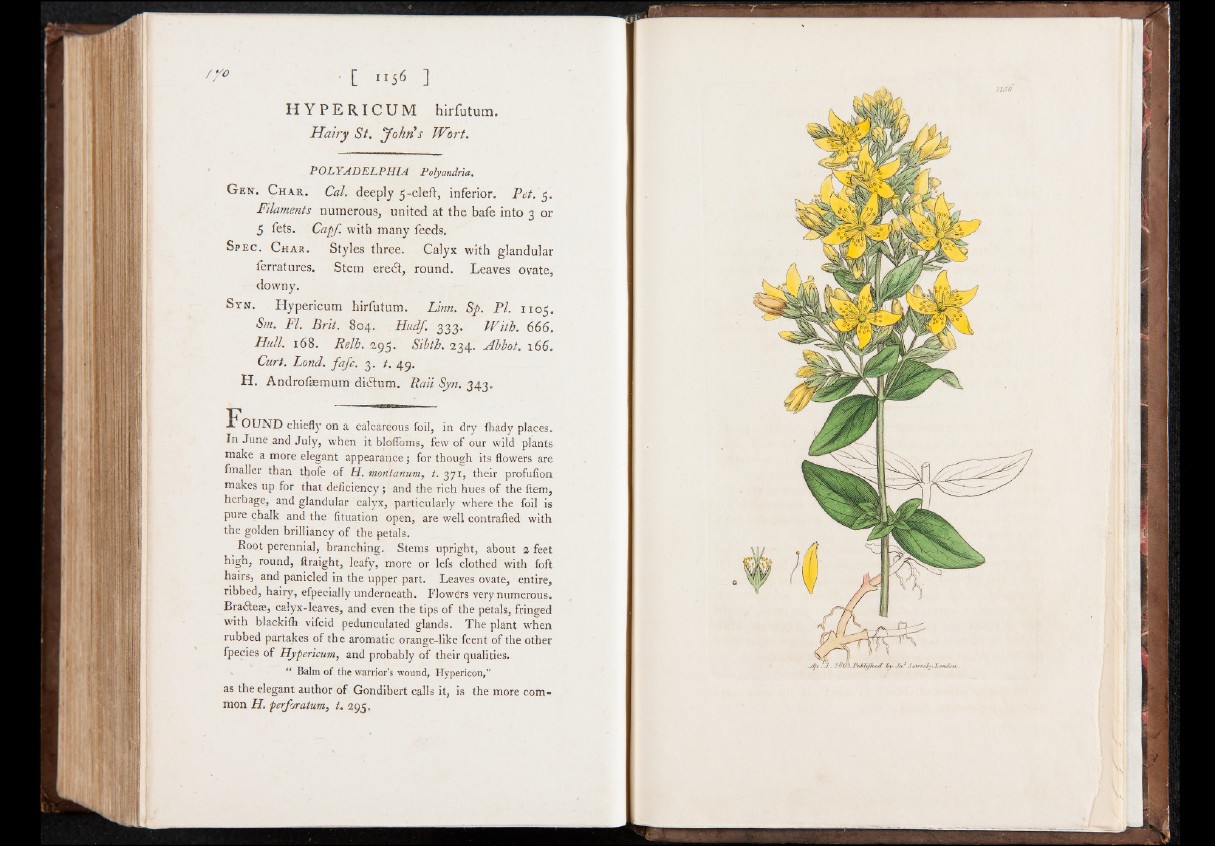
H Y P E R I C U M hirfutum.
H airy S t. John s Wort.
POLYADELPHIA Polyandria,
Gen. Char. Cal. deeply 5-cleft, inferior. Pet. 5.
Filaments numerous, united at the bafe into 3 or
5 fets. Capf. with many feeds.
S p e c . C h a r . Styles three. Calyx with glandular
ferratures. Stem eredt, round. Leaves ovate,
downy.
S y n . Hypericum hirfutum. Linn. Sp. PI. 1105.
S/n. FI. Brit. 804. Hudf. 333. With. 666.
Hull. 168. Relh. 295. Sibth. 234. Abbot. 166.
Curt. Lond. fafc. 3. t. 49.
H. Androfaemum didtum. Raii Syn. 343.
F o UND chiefly on a calcareous foil, in dry fhady places.
In June and July, when it blofloms, few of our wild plants
make a more elegant appearance j for though its flowers are
fmaller than thofe of H. montanum, t. 371, their profufion
makes up for that deficiency ; and the rich hues of the ftem,
herbage, and glandular calyx, particularly where the foil is
pure chalk and the fituation open, are well contrafted with
the golden brilliancy of the petals.
Root perennial, branching. Stems upright, about 2 feet
high, round, flraight, leafy, more or lefs clothed with foft
hairs, and panicled in the upper part. Leaves ovate, entire,
ribbed, hairy, efpecially underneath. Flowers very numerous.
Braftese, calyx-leaves, and even the tips of the petals, fringed
with blackifh vifcid pedunculated glands. The plant when
rubbed partakes of the aromatic orange-like fcent of the other
fpecies of Hypericum, and probably of their qualities.
“ Balm o f the warrior’s wound, Hypericon,”
as the elegant author of Gondibert calls it, is the more common
H. perforatum, t. 295.